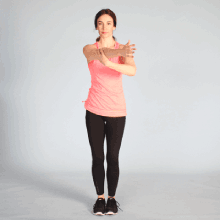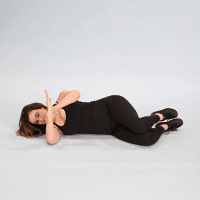Imagine the frustration of not being able to lift your arm without pain or stiffness. If you’re experiencing such discomfort, you might be dealing with a frozen shoulder, a condition that can limit your range of motion and disrupt your daily life. In this blog, we’ll dive deep into the realm of frozen shoulder, exploring its causes, symptoms, and effective strategies for relief.
Contents
What Are The Causes And Risk Factors Of A Frozen Shoulder?
In this section, we’ll explore the intricate web of factors that contribute to the development of a frozen shoulder.
Causes:
- Capsular Tightening: The primary cause of a frozen shoulder is the thickening and tightening of the capsule surrounding the shoulder joint. This restricts movement and leads to stiffness.
- Inflammation: Inflammation of the joint capsule can trigger a cascade of events that result in adhesive capsulitis.
- Scar Tissue Formation: Injury or trauma can prompt the formation of scar tissue within the joint capsule, leading to decreased flexibility.
- Underlying Conditions: Sometimes, a frozen shoulder can be secondary to other medical conditions, such as heart disease, lung disease, or stroke. This is known as secondary adhesive capsulitis.
Risk Factors:
- Age: Individuals between 40 and 60 are more susceptible to developing a frozen shoulder, although it can occur at any age.
- Gender: Women are at a higher risk of developing this condition compared to men.
- Medical Conditions: Diabetes, thyroid disorders, cardiovascular diseases, and autoimmune conditions increase the risk of a frozen shoulder.
- Immobility: Prolonged immobilization of the shoulder due to surgery, injury, or illness can trigger adhesive capsulitis.
- Hormonal Changes: Hormonal imbalances, such as those during menopause, may contribute to the development of frozen shoulders in women.
- Genetics: A genetic predisposition could play a role in susceptibility to this condition.
- Previous History: A history of frozen shoulder in one shoulder increases the risk of developing it in the other shoulder.
- Posture and Overuse: Poor posture and repetitive overuse of the shoulder joint can contribute to its stiffness.
- Lifestyle Factors: Smoking and obesity have been linked to an increased risk of developing a frozen shoulder.
Diagnosing A Frozen Shoulder
Diagnosing a frozen shoulder involves a careful examination of your symptoms, medical history, and physical assessment. While the condition’s symptoms can mimic other shoulder issues, a thorough evaluation by a healthcare professional. Here’s how the diagnostic process for a frozen shoulder typically unfolds:
- Medical History: Your doctor will start by asking about your symptoms, their duration, and any relevant medical history. It’s essential to provide information about any past injuries, surgeries, or existing medical conditions, as they could be contributing factors.
- Physical Examination: During the physical examination, your doctor will assess the range of motion in your affected shoulder and note any pain or stiffness. They may gently manipulate your arm to gauge the extent of your shoulder’s mobility.
- Imaging Tests: While imaging tests are not always necessary to diagnose a frozen shoulder, they can help rule out other underlying conditions and provide a clearer picture of your shoulder’s structure. X-rays, MRI scans, or ultrasound images may be recommended.
- Range of Motion Assessment: Your doctor will compare the range of motion in your affected shoulder with that of your unaffected shoulder. A limited range of motion, especially in specific directions, is a hallmark of a frozen shoulder.
- Staging the Condition: Frozen shoulder progresses through three stages – freezing, frozen, and thawing. Your doctor may use your symptoms and physical examination findings to determine which stage you’re in. This helps guide the treatment plan.
- Response to Treatment: If your symptoms and response to initial treatments align with the characteristics of a frozen shoulder, it can further confirm the diagnosis.
- Specialist Consultation: In complex cases or when the diagnosis is not straightforward, your doctor might refer you to a specialist such as an orthopedic surgeon or a rheumatologist for further evaluation and confirmation.
Effective Stretches For Frozen Shoulder
Incorporating gentle and effective stretches into your routine can help alleviate discomfort and promote the gradual restoration of shoulder mobility. Here are some stretches specifically designed for individuals with a frozen shoulder:
Cross-Body Arm Stretch
- Gently pull your affected arm across your body using your opposite hand.
- Aim for a stretch that is comfortable and not painful.
- Hold the stretch for 20-30 seconds on each side.
Pendulum Swing
- Stand or lean over a stable surface (table or chair) with your unaffected arm for support.
- Let your affected arm hang down relaxed.
- Gently swing your arm in small circles in both clockwise and counterclockwise directions.
- Perform 10 circles in each direction.
Towel Stretch
- Hold a towel with both hands behind your back.
- Use your unaffected arm to gently pull the towel upward, stretching the affected arm.
- Hold the stretch for 20-30 seconds and repeat a few times.
Wall Climbs
- Stand facing a wall with your fingers touching the wall at waist level.
- Slowly walk your fingers up the wall, keeping your arm straight.
- Only go as high as you can without causing pain.
- Hold the highest position for a few seconds before slowly walking your fingers back down.
Sleeper Stretch
- Lie on your affected side with your head supported by a pillow.
- Bend your affected arm at the elbow to 90 degrees and place your forearm flat on the bed.
- Use your opposite hand to gently press your affected hand downward, feeling a stretch in the back of the shoulder.
Armpit Stretch
- Gently lie on your unaffected side with your affected arm resting on a pillow or cushion.
- Slowly slide your affected arm forward, aiming to reach your arm above your head.
- Hold the stretch for a few seconds before sliding your arm back.
Important Tips
- All stretches should be performed gently and within your pain-free range of motion.
- Hold each stretch at the point of mild discomfort, never pushing into pain.
- Perform these stretches consistently, ideally multiple times a day.
- Consult a healthcare professional before beginning any new exercise routine, especially if you have any underlying medical conditions.
Effective Treatment Strategies For A Frozen Shoulder
It is possible to treat a frozen shoulder with a combination of effective treatment strategies, it’s possible to alleviate pain, improve mobility, and regain control over your shoulder joint.
- Physical Therapy: Physical therapy involves targeted exercises to gradually improve shoulder mobility. Gentle stretching and range-of-motion exercises can help break up adhesions and increase flexibility. Your physical therapist designs a personalized plan based on your stage of frozen shoulder and your individual needs.
- Medications: Over-the-counter nonsteroidal anti-inflammatory drugs (NSAIDs) can help manage pain and reduce inflammation. Your healthcare provider may prescribe stronger pain relievers or corticosteroid injections for more severe cases.
- Heat and Cold Therapy: Alternating between heat packs and cold compresses can help soothe pain and relax your muscles. Applying heat before exercises can make stretching more effective, while cold therapy can help manage pain and inflammation.
- Corticosteroid Injections: Administering injections of corticosteroids directly into the shoulder joint can reduce inflammation and pain. These injections are usually reserved for cases where other treatments have not provided sufficient relief.
- Joint Distension: In some cases, a process called joint distension is performed. It basically involves injecting sterile water into the shoulder joint to help stretch the tight capsule.
- Surgical Intervention: Surgery is typically a last resort when conservative treatments do not yield desired results. Manipulation under anesthesia or arthroscopic surgery can help release the stiff capsule and improve the range of motion.
- Home Care and Self-Management: Practicing exercises and stretches at home as advised by your healthcare professional can accelerate progress. Following a home exercise program can prevent stiffness from returning.
- Complementary Therapies: Techniques such as acupuncture, chiropractic care, or massage therapy may offer additional relief for some individuals.
- Lifestyle Adjustments: Maintaining a healthy weight and adopting ergonomic practices can help prevent further strain on the shoulder.
Conclusion
In essence, a frozen shoulder might bring challenges, but it’s a condition that can be managed and overcome with the right approach. By understanding its causes, symptoms, and treatment options, you’re equipped to take the necessary steps toward recovery. With patience, consistent efforts, and professional guidance, you can work towards regaining your shoulder’s mobility and returning to a pain-free and active lifestyle.
If you’re experiencing Shoulder pain, physical therapy for shoulder pain at PhysioMantra can help: Book an online physical therapy session.









